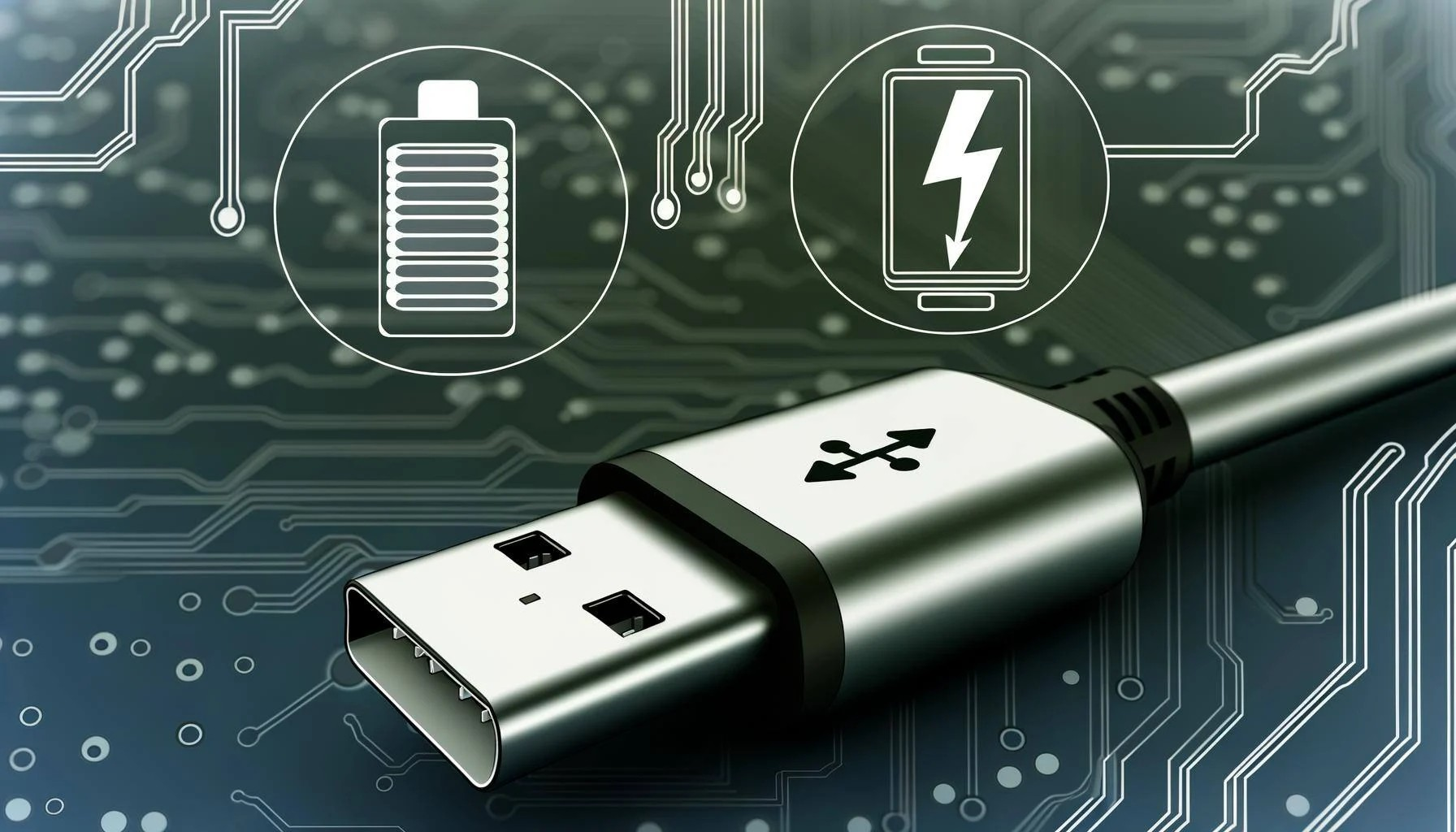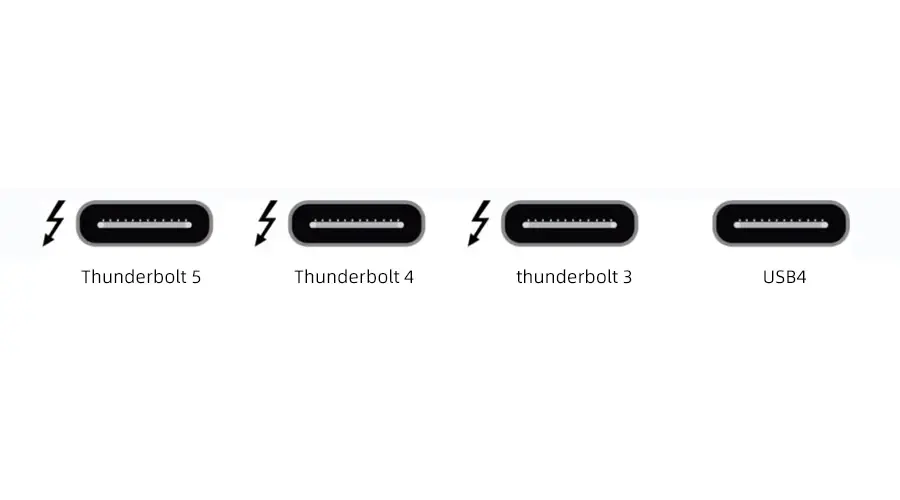Author: Ramix Chang 張丞雅
As USB Power Delivery (USB PD) requirements have naturally risen as the technology evolves. This article will explain the latest updates to the USB PD 3.2 specification as well as key test aspects that developers and manufacturers would benefit from understanding.
USB PD 3.2 specification updates and version control
- Settings of the PD specification version in the Vendor Information File (VIF) setting must be the same as that of the PD Firmware. Products that do not meet the specification will not be able to pass USB-IF certification.
- Officially released on October 2023, the USB PD 3.2 specification version 1.0, the following updates have been made to the standard as of April 2025:
- USB Power Delivery Specification R3.2 V1.1
- USB Power Delivery Compliance Test Specification, Q4 2024
- USB Type-C® Cable and Connector Specification, Release 2.4
USB PD testing is performed based on the latest aforementioned versions to ensure that product test results meet current specification requirements.
To help manufacturers through this transitional period, the USB-IF association has extended an 18-month grace period for Silicon and 24-months for End-Product, based on the released date of the USB PD specification version. The grace period for USB PD 3.1 product certification has been officially announced to be extended to March 2026. However, this grace period has been limited to USB PD R3.1 V1.8.
Details of significant dates are as follows:
Test focus
- Fast Role Swap (FRS):
- Fast Role Swap improves power supply stability and continuity by enabling devices to quickly swap roles without interrupting power supply whenever changes occur at the power supply end.
- Available for some time, FRS Initial Sink test is now mandatory and requires the use of a Granite River Labs or Teledyne LeCroy test solution.
- While FRS Initial Source test cannot be certified yet, GRL-C2 EPR and Lecroy instruments assesses for test items, allowing manufacturers to perform internal testing themselves.
- Adjustable Voltage Supply (AVS):
- AVS (Adjustable Voltage Supply) is a power supply mode introduced in USB PD 3.1/3.2, it allows the power supply (Source) to dynamically adjust the output voltage within a specific range. Unlike earlier fixed levels of 5V, 9V, 15V, and 20V, precise output voltage control can better meet safety regulations and energy efficiency certification requirements. This is particularly useful in application scenarios that require precise voltage control (such as laptops, portable devices, and fast charging systems).
- The AVS test steps have been updated in the USB PD CTS version in the third quarter of 2024. The USB PD 3.2 specification requires for all products with a power supply capacity exceeding 27W to support the SPR AVS mode.
- SPR AVS voltage range:
- 9V to 15V is suitable for SPR Sources of up to 45W.
- 9V to 20V is suitable for SPR Sources over 45W.
- The adjustable voltage can be calibrated in 100mV increments.
Excerpt from USB Power Delivery Spec R3.2 V1.1.
3. Shared Capacity or Shared Power:
-
- Please refer to the description of Section 4.8.6 USB Type-C® Multi-Port Chargers in the USB Type-C Cable and Connector Spec R2.4. (Download link)
- If the product has more than two ports and supports Shared Power, the Shared Capacity Interoperability Test must be added to the USB PD Compliance certification. Please refer to the GRL official website for details on test software. (Website)
- Shared Capacity Power Delivery products must implement the Discover Identity response message and provide the DFP VDO.
- The DFP VDO Port Number field must match the Port_Label field in the VIF.
- While an unconnected USB Type-C® port is not required to reserve 7.5W of power, it must provide at least 7.5W of power within 3 seconds of a device being connected.
- Test requirements:
- The BIST Shared Capacity Enter Mode and BIST Shared Capacity Exit Mode commands must be executed.
- The dynamic power sharing strategy needs to be temporarily disabled during the test to simulate a single-port power allocation state (Assured Port).
- Rebalancing power must not use Hard Reset, Error Recovery, or Disabled state.
- Shared Capacity Power Sharing Example (See USB Type-C® Specification Table 4-23 for details)
- High to Low Allocation: The first connected port can get its maximum PDP (PD Power), and the rest are allocated according to the remaining power.
- Even distribution: When two ports are connected, each port can be allocated half of the maximum PDP.
Excerpted from USB Type-C® Cable and Connector Spec R2.4.
4. Extended Power Range (EPR):
-
- The EPR test program covers the following products:
- Supports one EPR Source port and multiple SPR Source ports.
- Support multiple EPR Sink ports.
- EPR Multiple Source Port has not yet been approved for certification testing.
- The EPR test program covers the following products:
Summary of USB PD 3.2 Specification and Test Highlights
|
Classification |
Key points |
|
Specification Version |
- USB PD R3.2 V1.0 was released in October 2023, and the latest version is R3.2 V1.1 |
|
Certification Grace Period |
- Silicon: 18-month grace period |
|
FRS (Fast Role Switching) |
- Improve power supply continuity |
|
AVS (Adjustable Voltage Supply) |
- AVS can adjust the voltage in 100mV steps within a specific range |
|
Shared Capacity |
- Applicable to multi-port (≥2) USB PD products |
|
EPR (Extended Power Range) |
- Supports test inclusion plan for single EPR Source and multiple SPR Source ports |
Enhanced power support with USB PD 3.2
The USB PD 3.2 specification further enhances support for power supply stability, flexibility, and multi-port devices, and provides clear testing requirements for technologies such as FRS, AVS, power sharing, and EPR. When designing USB PD devices exceeding 27W, developers must pay special attention to AVS implementation and certification requirements, while also being aware of the latest USB-IF testing policies and grace period schedules. With the advancement of automated testing tools, future certification processes will become more sophisticated and rigorous, and will be a key link in whether a product can be successfully launched on the market.
References
- USB Power Delivery Specification R3.2 V1.1
- USB Power Delivery Compliance Test Specification, Q4 2024
- USB Type-C Cable and Connector Specification, Release 2.4
- USB Type C Functional Test Specification, Revision 0.91
Author
GRL Taiwan Engineer Ramix Chang
Masters Graduate from National Chiao Tung University
With nearly three years of testing experience, Chang is familiar with Thunderbolt PD, USB-IF PD Compliance and other testing specifications. Currently responsible for USB PD testing at GRL Taiwan, Chang is always happy to assist customers on testing issues to help them obtain certification with ease.


